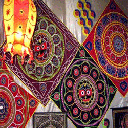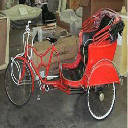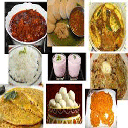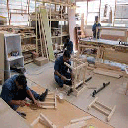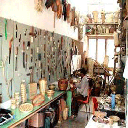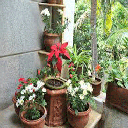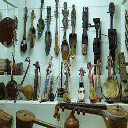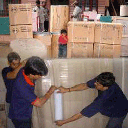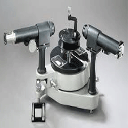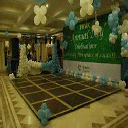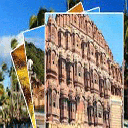Nagaland is part of the unexplored parts of India, even to an Indian. the state in the far north-eastern part of India. It borders the state of Assam to the west, Arunachal Pradesh and part of Assam to the north, Myanmar to the east and Manipur to the south. The state capital is Kohima, and the largest city is Dimapur. The State of Nagaland has an area of 16,579 km2 with a population of 1,980,602 as per the 2011 census making it one of the smallest states of India. The State is mostly mountainous except those areas bordering Assam valley. Mount Saramati is the highest peak in Nagaland with a height of 3,840 metres and its range forms a natural barrier between Nagaland and Myanmar. It lies between the parallels of 98 degree and 96 degree East Longitude and 26.6 degree and 27.4 degree latitude North of the Equator. Nagaland, the 16th State of the Indian Union, was established on 1 December 1963. It is divided into eleven districts: Kohima, Phek, Mokokchung, Wokha, Zunheboto, Tuensang, Mon, Dimapur, Kiphire, Longleng and Peren. It is a largely mountainous state. Agriculture is the most important economic activity in Nagaland. Principal crops include rice, corn, millets, pulses, tobacco, oilseeds, sugarcane, potatoes and fibres. Other economy boosters are forestry, cottage industries, insurance, real estate and tourism. Dimapur is the biggest city in the state. Kohima, the capital is a comfortable place to stay in. It is well connected by road to the entire state and can be a tourist’s base camp. Nagaland has numerous lakes which are located bang in the middle of mountains, providing for some spectacular scenery. The numerous local tribes of the lovely state of Nagaland celebrate their festivals at different times in the year. For a tourist, there’s not a good season or off season. The weather is boisterous for most part of the year with intermittent rains now and then. Since the state has a rough history, there are permits required to travel to and within the state of Nagaland for a non-Indian. However, these permits can be easily obtained by the concerned tourist at the Home Ministry’s office in New Delhi. Visit Nagaland for an enriching experience. Rest assured, you’ll find the peace you’re looking for. The beautiful plateaus and valleys of this breathtaking state can make you want to kick up your feet and stare into the fog enveloped mountains forever. Every tribe of Nagaland have their own unique language. Nagas speak 60 different dialects belonging to the Sino-Tibetan family of languages. The traditional languages do not have any script of their own. The Christian missionaries used Roman script for these languages.In 1967, the Nagaland Assembly proclaimed English as the official language of Nagaland and is the medium for education in Nagaland.
Jaded with the concrete jungles, urban hurry hounding you every waking moment? Come to Nagaland. Lofty hills, thickly wooded jungles and exotic warrior tribes - it is a fairytale land. Very few are familiar till date with this place tucked away in the obscure corner of the eastern Himalayas. Come, explore it before others do. Kachari Ruins:Kachari Ruins, Kachari Ruins historical, Kachari Ruins travel, Kachari Ruins tourism, Kachari Ruins Historical Place, travel to Kachari Ruins MonumentKachari ruins are situated in Dimapur, the ancient Kachari capital. It is one of the important sites of megalithic culture. Though the Kacharis are predominantly non-Aryan with elaborate rituals and the cult of fertility, there are evidences of a touch of Hindu influence on most of them. Kohima Museum:The state of Nagaland has always been the epicenter of amalgamation of various tribes inhabiting the eastern region of India. The Kohima Museum was set up with an aim to provide the visitors a glimpse of the diverse tribal habitats and cultures. The museum houses some of the rarest artifacts belonging to the different tribes inhabiting the state. The sixteen tribal groups that make up the tribes of Nagaland are represented amongst the others. The clan motifs, colorful traditional dresses, dialect, practices and traditions are displayed at the museum. The Nagamese, a pidgin language invented by the Nagas by contribution from local dialects and Assamese is also an interesting factor available for study at the museum. The monoliths represent the elaborate rituals of the cult of fertility. The beautifully executed entrances to these monuments is in pristine condition even now. The North East Zone Cultural Center, which is about 3 km from the Dimapur railway station has a small well-maintained museum showcasing the cultural heritage of the Northeast. Dzukou Valley:Though called a valley this place actually lies at a height of 2,462 m above sea level and becomes a carpet of red and white rhododendron, lilies and wild flowers during the end of winter and spring season (October to March to be precise). The Dzukou valley is at a distance of 25 km from Kohima. The drive from Kohima to the valley is a joyride to heaven and Trekking in the valley is not only an option but a command by the nature. This exquisite sight encourages almost every visitor to break into an impromptu jingle and sway to the graceful elegance of nature. Japfu peak: standing at a height of 3048 m above sea level is the second highest peak in Nagaland. This peak is situated at 15 km distance towards south of Kohima and is the main attraction for many trekking parties and enthusiasts. The path towards the summit is well traversed by the trekkers upto the base, thereafter the routes are charted as per convenience and seasonal conditions. The view from the top of the peak (if you reach there) is breath taking. The entire valley with its lush green reflection appears like a lake full of emeralds cradled in the snow clad Himalayas. The view of the adjoining city and village dwellers provide an ideal location for any artist to capture the scene on a canvass. The Intaki Wildlife Sanctuary: is located at distance of 35 km from Dimapur and is home to a variety of species of animals. Elephants, wild buffaloes ('Mithun’), sambhar, rare Hoolok gibbon (the only one in India), barking deer, flying squirrels, tiger, wild dog, sloth bear, hornbill and black storks live and flourish in the protected environment of the Intanki National Park which boasts of a area of 200 sq km. The park is very well maintained especially after an episode wherein PETA had highlighted the plight of the animals due to poor living conditions. The park also provides various facilities for family outing and entertainment. Another wonder hidden by the Japfu ranges is the giant rhododendron tree. This Guinness Record holder stands 130 ft tall and with an 11 ft girth. However, the tree demands a 5 hr trek around the Japfu for one look. Kohima Zoo:The state bird of Nagaland is the rare Tragopan bird and the state animal is the wild buffalo ('Mithun’). The state bird is a rare species and can be seen at the Kohima Zoo as can be the state animal. The Kohima Zoo is created on a hill. The sloping portion of the hill has been innovatively utilised to create free and natural space for the animals housed inside the zoo. Other than the main attractions, it is also possible to find a variety of animals and birds within the zoo. A special recommendation would be observe the golden langurs and Blythe’s Tragopan at the zoo. The zoo also offers special play zone for children and fun facts about the species. FOr shopping there is The "Naga bazaar" is one place which can be considered as the nodal point for all roads to converge. The market is the main attraction of the city and is famous for the trading of live stock. The definition of live stock is a bit comprehensive at Nagaland; it consists of all living things including the favourite Naga dish, the black dog. The Naga cuisine accommodates the widest variety of chow the human brain can comprehend. A visit to the market will also provide an opportunity to mingle with the local crowd and the tribal saleswomen who roam the market in their splendid tribal costumes and provide exquisite collection of tribal handicraft and poultry and fishery products. Mokokchung: The AO tribe of the Nagas have made Mokokchung their home. This place is around 150 km from Kohima and is located at an altitude of 1350 m above sea level. Mokokchung is considered the capital of this branch of the Nagas. Dressed in the warrior dress of beautiful black & red hand woven shawl with its white decorated band signifying the prowess over enemies, the AO warriors jostle on the busy streets of Mokokchung. The tribe celebrates ‘Moatsu’ and ‘Tsungrem Mong’, the harvesting festivals during the months of March and August respectively. Visit to this village provides an insight into the life and social setup of the Nagas. The village is self governed and the women folks are busy creating a wide variety of handicraft articles. The women are ever eager to teach a trick or two to the visitors, if approached.


